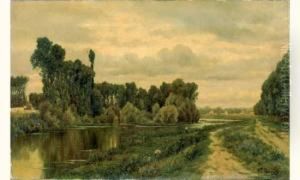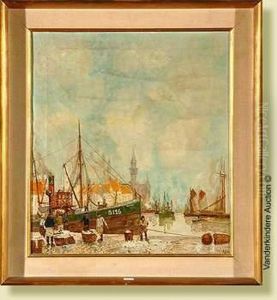Auguste De Wever Paintings
Auguste De Wever was a Belgian artist known primarily for his skill as a sculptor. Born in Ghent on May 9, 1827, De Wever grew up in a period where Belgium was experiencing a resurgence in the arts, following its independence from the Netherlands in 1830. This cultural renaissance in Belgium during the 19th century provided a fertile ground for artists like De Wever to explore and develop their talents.
De Wever's early life and educational background were fundamental in shaping his artistic career. He studied at the Royal Academy of Fine Arts in Ghent, where he honed his skills and developed a deep understanding of classical sculpture. His education was steeped in the traditions of the Renaissance and the Baroque periods, which is evident in his work. De Wever was particularly influenced by the Flemish sculptural tradition, which is known for its intricate detail and emotional expressiveness.
Throughout his career, Auguste De Wever created numerous works that were well-received by critics and the public alike. He was known for his ability to capture the human form with both realism and a sense of idealism, a characteristic that made his sculptures particularly appealing in his time. His works often dealt with religious and mythological subjects, common themes in the 19th century, and he was skilled at portraying these subjects with a sense of drama and dynamism.
Not only was De Wever successful in his homeland, but he also gained recognition abroad. His sculptures were exhibited in international exhibitions, and he received several awards for his work. De Wever's contributions to the art world were not limited to his own creations; he also had an impact as a teacher, passing on his knowledge and skills to the next generation of artists.
Auguste De Wever's career was a reflection of the artistic movements of his time, as he was both a product and a contributor to the Romantic and Realist movements that were prevalent in Europe during the 19th century. His works are characterized by their emotional depth and technical precision, qualities that continue to be appreciated by art historians and collectors today.
De Wever's life came to an end on January 12, 1896, in Antwerp. Although not as widely known as some of his contemporaries, De Wever left behind a legacy of craftsmanship and artistic expression that cements his place in the history of Belgian art. His sculptures remain a testament to the rich cultural heritage of Belgium and the enduring appeal of the classical art form.

